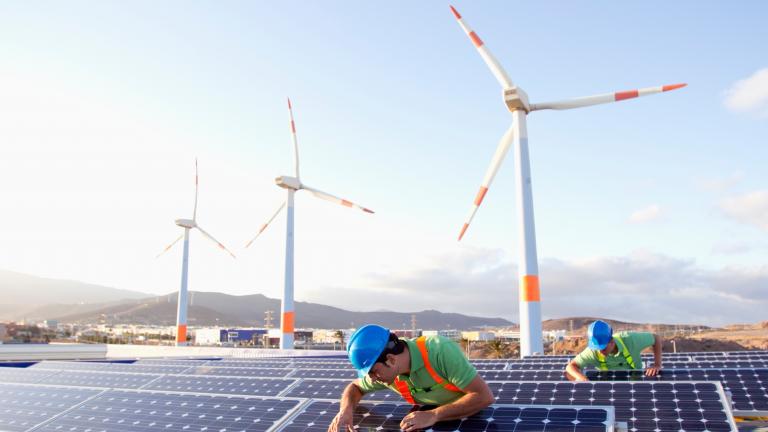
Construction of solar farms, wind turbines, and other sources of renewable power will soar over the next five years as nations set stricter climate policies and more ambitious emissions targets.
New renewable electricity capacity will set another record this year, at 290 gigawatts, according to a new report from the International Energy Agency. That’s roughly equivalent to building nearly 300 nuclear reactors or almost 150 Hoover Dams, and it’s happening despite global supply chain issues, rising material costs, and covid restrictions.
By 2026, global capacity from these carbon-free sources will rise more than 60% over last year’s levels, the intergovernmental research organization now projects. That will add up to some 4,800 gigawatts, on par with all the world’s fossil-fuel and nuclear plants today.
In addition, renewables will account for 95% of the overall capacity growth in the power sector over that period.
Building new wind and solar plants doesn’t necessarily mean renewables are displacing fossil fuel—because demand for energy is rising as well. And it still remains to be seen how quickly carbon-free sources will become the dominant source of electricity globally and begin rapidly supplanting coal, natural gas, and other polluting sources.
While renewables now account for most of the new capacity being built, the level of electricity generation by source can bounce around considerably from year to year, depending on shifting costs, weather conditions, and more. But in the last few years, generation from coal has declined and solar, hydro, and wind have ticked up, according to BloombergNEF. In fact, those three sources accounted for all the growth in power generation last year, as electricity output from coal, natural gas, and nuclear plants declined.
The IEA’s renewables estimates for 2026 are a substantial upward revision, more than 40% higher than its projections last year. Among other things, the agency cited the improving economics, increased national emissions reduction commitments ahead of the recent UN climate conference, and domestic developments and policies, writes James Temple.
Read the full article at: https://www.technologyreview.com/2021/12/01/1040850/renewables-are-set-to-soar/






